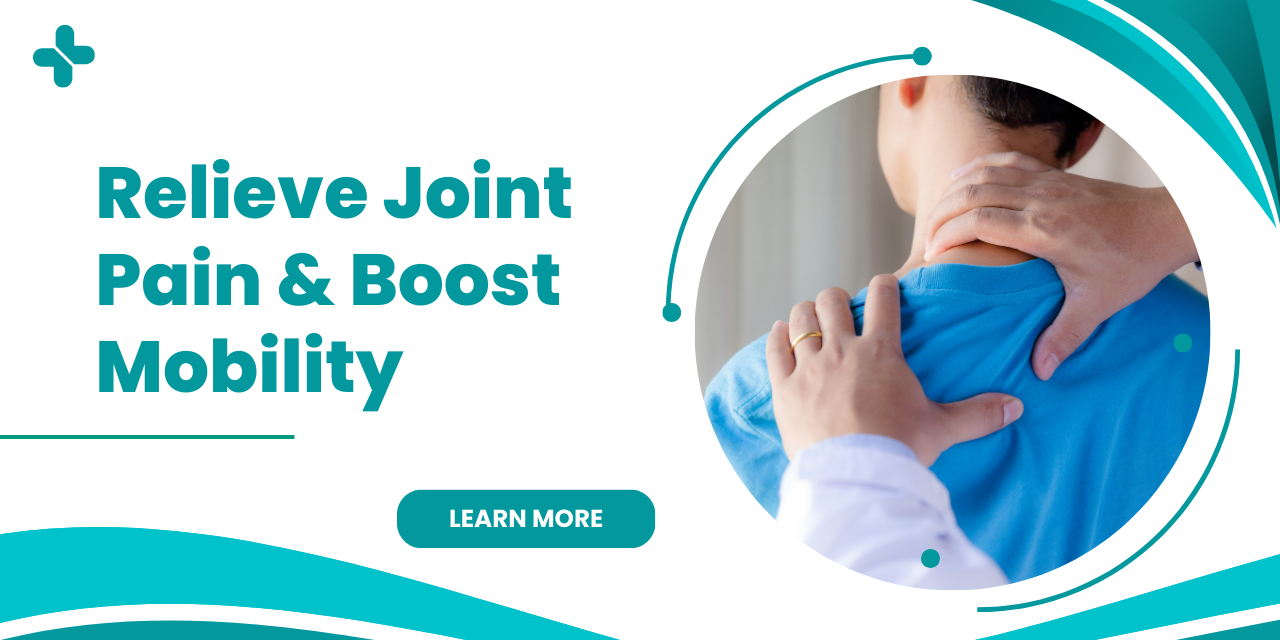Joint pain can significantly affect your quality of life, making everyday activities challenging and uncomfortable. Understanding the best ways to manage and alleviate joint pain can help you regain mobility and improve your overall well-being. In this article, we’ll explore various methods and treatments that can provide relief and restore your joint function.
Understanding Joint Pain
Joint pain, or arthralgia, can result from a variety of conditions, including arthritis, injuries, or other chronic diseases. It often manifests as discomfort, swelling, or stiffness in the joints, making movement difficult. Common types of arthritis include osteoarthritis, rheumatoid arthritis, and gout, each requiring a tailored approach for effective management.
➽ Physical Therapy
Physical therapy is a crucial component in managing joint pain. A physical therapist can design a personalized exercise program to strengthen the muscles around the affected joint, improving flexibility and reducing pain. Exercises might include stretching, strength training, and aerobic activities. Regular physical therapy can enhance joint function and prevent further deterioration.
➽ Medication
Medications play a significant role in pain management. Over-the-counter (OTC) options like acetaminophen and nonsteroidal anti-inflammatory drugs (NSAIDs) can alleviate pain and reduce inflammation. For more severe cases, a doctor might prescribe stronger pain relievers or disease-modifying antirheumatic drugs (DMARDs) to address the underlying condition.
➽ Lifestyle Modifications
Incorporating healthy lifestyle changes can have a substantial impact on joint health. Maintaining a healthy weight reduces stress on your joints, particularly those bearing the body’s weight like the knees and hips. A balanced diet rich in anti-inflammatory foods such as omega-3 fatty acids, antioxidants, and vitamins can support joint health and overall wellness.
➽ Alternative Therapies
Alternative therapies can complement conventional treatments and offer additional relief. Options such as acupuncture, massage therapy, and hot/cold therapy can help manage pain and improve mobility. These methods can provide relief by promoting circulation, reducing muscle tension, and improving joint function.
➽ Surgical Interventions
In cases where conservative treatments are ineffective, surgical options may be considered. Procedures such as arthroscopy, joint replacement, or realignment surgeries can offer significant relief and restore function. Consulting with a specialist is essential to determine the most appropriate surgical approach based on the severity and type of joint pain.
➽ Assistive Devices
Using assistive devices can make daily activities easier and less painful. Braces, splints, and orthotic inserts can support and stabilize the affected joints, reducing discomfort and improving mobility. Your doctor or physical therapist can recommend devices suited to your specific needs.
Conclusion
Effectively managing joint pain requires a comprehensive approach that includes physical therapy, medication, lifestyle modifications, and, if necessary, surgical interventions. If you’re experiencing persistent joint pain and need expert care, consider visiting the Best Orthopaedic Doctor in Zirakpur. Dr. Naveen Juneja at Santosh Hospital is renowned for his expertise in treating joint disorders and providing personalized care. For more information or to schedule an appointment, call at 01762503939













